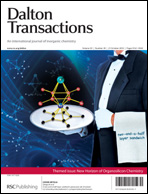The potential energy surfaces for the chemical reactions of lattice-framework group 14 heavy carbene species have been studied using density functional theory (B3LYP/LANL2DZ) and the Gibbs free energy method. Five lattice-framework group 14 heavy carbene species, L–F–X: , where X = C, Si, Ge, Sn, and Pb, have been chosen as model reactants in this study. Also, four kinds of chemical reactions, O–H bond insertion, C–H bond insertion, alkene cycloaddition, and dimerization, have been used to study the chemical reactivities of these species. Basically, our present theoretical work predicts that the larger the ∠C1XC2 bond angle of the lattice-framework group 14 heavy carbene species, the smaller the singlet–triplet splitting, the lower the activation barrier, and, therefore, the greater the rates of its chemical reactions with various other species. Moreover, the theoretical investigations suggest that the relative lattice-framework reactivity decreases in the order: C > Si > Ge > Sn ≫ Pb. That is, the heavier the group 14 atom (X), the more stable is its lattice-framework carbene towards chemical reactions. As a result, we predict that the L–F–Pb should be stable, and can be synthesized and isolated at room temperature. Furthermore, the singlet–triplet energy splitting of the lattice-framework group 14 carbene species, as described in the configuration mixing model attributed to the work of Pross and Shaik, can be used as a diagnostic tool to predict their reactivities. The results obtained allow a number of predictions to be made.


 Please wait while we load your content...
Please wait while we load your content...